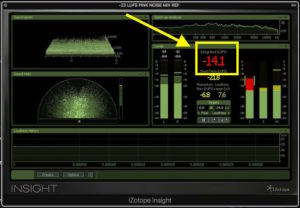- in Engineering , Production by Bobby Owsinski
Spotify Drops It’s Loudness Target So No Need For Loud Mixes Anymore
 Artists, producers and record labels have been obsessed over final mix volume levels for over 30 years now, as mix levels are raised to ridiculous levels where even distortion no longer matters. The problem is that we’ve known for a long time now that severely compressed low dynamic range mix levels are counterproductive and can even hurt it in the long run. That said, Spotify might have just dropped the final bomb on the level wars when it recently lowered it’s target volume down to -14 LUFS from its previous -12.
Artists, producers and record labels have been obsessed over final mix volume levels for over 30 years now, as mix levels are raised to ridiculous levels where even distortion no longer matters. The problem is that we’ve known for a long time now that severely compressed low dynamic range mix levels are counterproductive and can even hurt it in the long run. That said, Spotify might have just dropped the final bomb on the level wars when it recently lowered it’s target volume down to -14 LUFS from its previous -12.
I know what you’re thinking. What is this LUFS thing and why does the Spotify level matter anyway? Okay, LUFS first. To put it simply, LUFS is an international scale for measuring loudness that uses an algorithm that closely matches how we hear. It was instituted primarily to counter complaints about television commercials being a lot louder than the normal program, even though the meter levels read the same for both. As anyone who’s wielded a compressor knows, if you squash a program enough, it will sound a lot louder at the same meter reading than a program not compressed. LUFS takes care of that, and television now has very strict rules about allowing a program to air that exceeds a LUFS level of -23 (a station could lose its license if it does).
In order to get around output levels varying with each song, streaming services have adopted a LUFS target as well. Apple Music’s is -16LUFS, and YouTube and Tidal are -14. Spotify now targets -14 as well (the AES standard is -16). What this means is that no matter how loud or quiet a song is when uploaded, Spotify will adjust the level so it plays at -14 LUFS! You gain nothing by making your mix the loudest thing on the planet as the level will be turned down. In fact, it will sound a lot worse than a mix a -18 with lots of dynamic range that has to be increased!
Radio found out a long time ago that compressing the daylights out of a program only led to listener fatigue and people changing the station. The average music listener usually tells us the same thing by preferring a mix with lots of dynamic range when played side by side with one that’s crushed (just go to any hi-fi show to hear how every song used as a demo has lots of dynamic range). Unfortunately, label execs, producers and artists are so paranoid that their mixes are not going to be as loud as the mix played in front or behind it that they still demand their levels to be firey-hot, despite the protestations of their mastering engineer.
With Spotify now lowering its target LUFS level down to be in line with the rest of the industry, there is now no need for super-compressed hot levels ever again. Remember, do that and it will sound worse when it’s played back at a lower level on Spotify.

